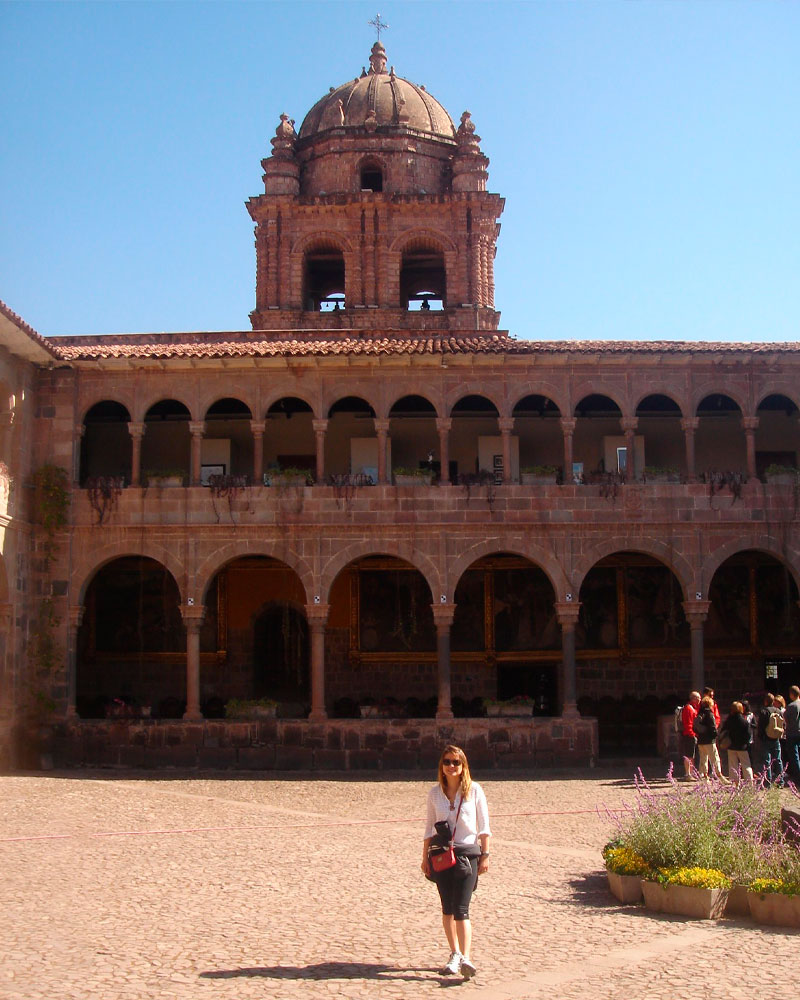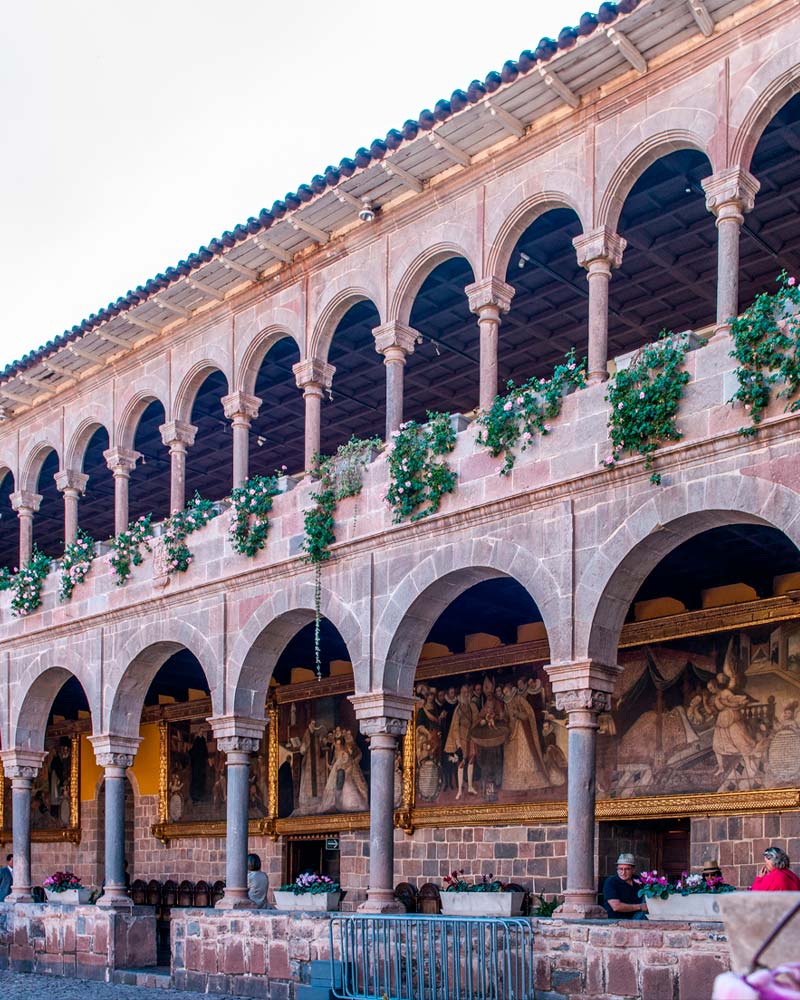
During the Inca period, the temple of Coricancha, whose name means "Golden Enclosure", was the most important religious center of the Tahuantinsuyo. Dedicated mainly to the god Inti (the Sun), its walls were covered with gold sheets and housed statues, altars, and offerings.
With the arrival of the Spanish, a large part of the temple was destroyed and its foundations were used to build the Church and Convent of Santo Domingo, one of the most prominent Christian temples of the colonial era. This overlapping of styles symbolizes the clash and fusion of two cultures: the Inca tradition and the Catholic faith introduced by the conquerors. Therefore, here we will tell you all the details about this place, from its history to how to get there and visit it, so you can make the most of your tour of Cusco.
The church and convent of Santo Domingo is a colonial construction of Cusco. It was built in 1538 under the orders of the Dominican order. It is located on the bases of the famous Coricancha temple, the most important of the Inca empire. It has a baroque structure that uses the strong stone walls of the Inca temple. Inside, its main altarpiece stands out as well as its collection of paintings made by artists from the 'Cusco school of painting' (16th and 17th centuries).
The Church and Convent of Santo Domingo is located in the heart of the Historic Center of Cusco, built on the foundations of the ancient Coricancha temple. It is easily accessible from any point in the city, either by public transport or taxi, moreover, you can get there by walking from the Plaza de Armas of Cusco, following El Sol avenue a few blocks until you reach Coricancha, the entrance to the complex is through Ahuacpinta Avenue 659.
The Convent of Santo Domingo Cusco was built in 1538 by the Dominican order on the foundations of the Coricancha temple, the most important religious site of the Inca Empire. The choice of this place was not by chance: the Spanish conquerors sought to impose the Catholic faith over the most venerated sacred space by the Incas, merging two traditions and marking the beginning of the cultural and religious mix in Cusco.
During the colonial period, the convent acquired great relevance as a religious and educational center. Its architecture combines the solidity of the Inca walls with baroque and Renaissance elements, which made it a symbol of cultural overlap. Over the centuries, it has been the scene of important historical events and has also suffered damage due to earthquakes.
The Convent of Santo Domingo is one of the most important colonial temples in Cusco, both for its historical and religious value. It was one of the first centers of evangelization established in the city and quickly became a key space for the spread of Christianity under the direction of the Dominican order. Its construction, which began in 1538, marked the start of a new stage in Cusco's architecture, introducing the baroque style that can still be seen today in its towers, altarpieces, and altars.
Besides its religious function, the convent played a central role in the cultural and social life of colonial Cusco. It houses one of the most notable collections of the Cusco School of painting, which makes it a point of reference for viceregal art in Peru. It is also a space that symbolizes the continuity of the colonial past in the city, maintaining its importance as a place of worship, teaching, and cultural heritage.
Inside the convent, a museum operates that preserves a valuable collection of colonial art and religious objects. Among its main attractions are the canvases of the Cusco School, baroque altarpieces, sculptures, and liturgical ornaments used since the viceregal era.
You can also tour its cloisters and rooms that maintain the original architectural style, which allows the visitor to learn firsthand what life was like in a Dominican convent during the colonial period. This museum is not only a space for artistic contemplation but also a place where you can appreciate the history of evangelization and the cultural influence that the Dominicans had in Cusco.
The Convent of Santo Domingo is known for being one of the most representative colonial temples in Cusco, famous for its baroque architecture, its imposing towers, and its artistic richness. Also, it is distinguished by housing one of the most complete collections of the Cusco School of painting, which makes it a cultural and religious reference. Today, it is a very visited place by both devotees and tourists who seek to know the city's colonial heritage up close.
 |  |  |
Beyond the majesty of Machu Picchu, the surroundings of Cusco offer a variety of experiences that allow you to get to know the culture, history, and landscapes of Andean Peru up close. From traditional towns to little-explored natural wonders, there is a lot to discover just a few kilometers from the imperial city. If you are looking for new adventures outside the usual, here we present the places you can't miss: